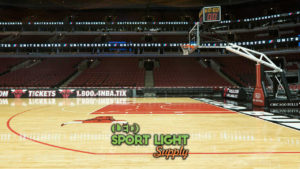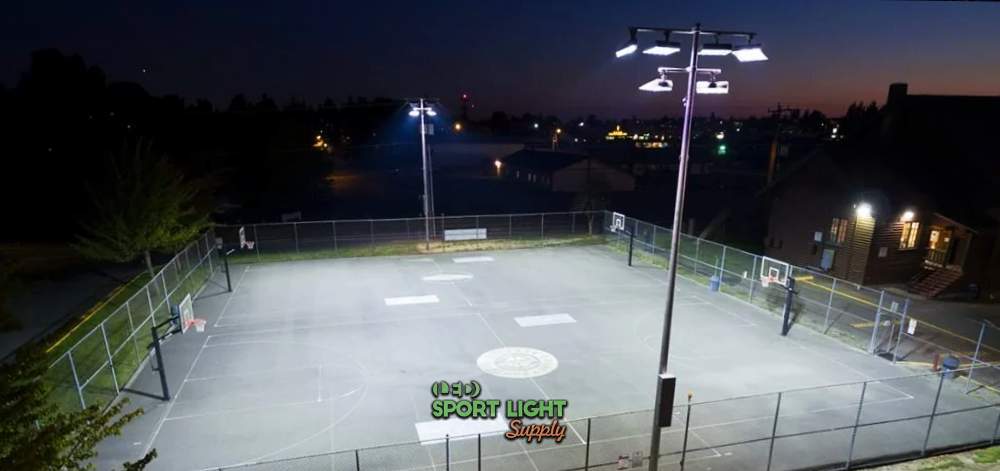
When it comes to upgrading lighting systems in sports facilities, the choice between traditional lighting options and modern LED fixtures is often a major consideration. Though LEDs come with a higher initial cost, their long-term benefits in terms of energy efficiency, reduced maintenance, and durability make them an increasingly popular choice for sports venues.
| Item | Description | Estimated Price (USD) |
|---|---|---|
| LED High-Bay Fixtures | High-performance fixtures designed for large areas. | $300 – $600 each |
| LED Flood Lights | Powerful lights for illuminating large outdoor areas. | $250 – $500 each |
| LED Sport Lighting System | Complete system with specialized optics for sports. | $5,000 – $15,000 |
| Control Systems | Smart controls for dimming and scheduling. | $500 – $1,500 |
| Installation Costs | Professional installation including labor and setup. | $2,000 – $5,000 |
| Maintenance and Upgrades | Cost for periodic maintenance and potential upgrades. | $200 – $500 per year |
Table of Contents
Toggle
LED fixtures generally require a higher upfront investment compared to traditional lighting options such as halogen or fluorescent lights. This increased cost stems primarily from the advanced technology and superior performance that LEDs offer. Unlike conventional lighting systems, which use older technology, LED lights incorporate cutting-edge features that provide better illumination, energy efficiency, and longevity. These features, such as specialized optics that reduce glare and improve uniformity across the playing surface, add to the initial expense.
Furthermore, the installation of LED lighting often requires professional expertise. Sports facilities need lighting systems that are precisely tailored to their unique needs, whether that involves specific light distribution or the ability to withstand varying environmental conditions. The complexity of these systems, combined with the cost of labor to properly set them up, means that the total initial investment for LED lights is usually higher than for traditional fixtures.
Despite this, it is important to remember that this upfront expense is offset over time through savings on energy and maintenance. High-quality LED lights are designed to provide substantial value, with returns that become evident throughout their lifespan.
One of the standout features of LED lighting is its energy efficiency. Compared to traditional lighting sources, such as halogen and fluorescent lights, LEDs consume significantly less power for the same level of brightness. This reduction in energy consumption can lead to considerable savings on electricity bills, especially in sports facilities with high usage rates. For example, stadiums or arenas with frequent events will benefit greatly from LEDs, as their power draw is much lower compared to older lighting technologies.
The energy efficiency of LED lighting is due to the technology used in their design. LEDs produce light through a process called electroluminescence, which is far more efficient than the heat-producing processes used by traditional lights. As a result, LEDs convert a higher percentage of energy into visible light, rather than wasting it as heat. This means that facilities can maintain the same level of lighting quality while using a fraction of the energy required by other systems.
This reduction in energy consumption not only lowers operational costs but also aligns with sustainability goals. Many sports facilities are increasingly looking to reduce their environmental impact, and switching to LEDs offers a simple yet effective way to contribute to energy conservation. Over time, this energy savings adds up significantly, providing an ongoing financial benefit to the facility.
 Another factor that contributes to the lower long-term costs of LED lighting is its extended lifespan. LEDs last much longer than traditional lights, which means fewer replacements and less frequent maintenance are needed. Traditional lighting systems often require regular bulb replacements and maintenance checks to ensure that they are operating at full capacity. In contrast, LED lights are designed to be more durable and reliable, reducing the frequency of these maintenance tasks.
Another factor that contributes to the lower long-term costs of LED lighting is its extended lifespan. LEDs last much longer than traditional lights, which means fewer replacements and less frequent maintenance are needed. Traditional lighting systems often require regular bulb replacements and maintenance checks to ensure that they are operating at full capacity. In contrast, LED lights are designed to be more durable and reliable, reducing the frequency of these maintenance tasks.
The longevity of LEDs is largely due to their robust construction and advanced thermal management systems. These lights are built to withstand heat and other environmental stresses, making them less likely to fail or degrade over time. For instance, the risk of burnout is significantly lower with LEDs compared to incandescent or halogen bulbs. This extended lifespan translates into fewer disruptions to court activities and less downtime for repairs or replacements.
For sports facilities, this reliability is a major advantage. A lighting system that requires minimal maintenance means less interference with events and reduced operational disruptions. This, in turn, helps maintain the flow of events and ensures that the facility remains operational without unexpected shutdowns.
While LEDs require less frequent maintenance compared to traditional lights, it is still important to account for the costs associated with maintaining a lighting system. Although LED lights have a longer lifespan, they do eventually need attention. As the technology continues to evolve, however, LEDs are becoming even more durable, with newer designs requiring even less upkeep. Maintenance for LED fixtures generally involves inspecting the system for damage, ensuring that all components are working properly, and occasionally cleaning the fixtures to maintain optimal light quality.
While the cost of maintenance is typically lower than with traditional systems, it is still a consideration. High-quality LED fixtures are typically more expensive than their halogen or fluorescent counterparts, and some models may require specialized technicians for repairs. However, these costs are far outweighed by the savings in energy bills and the reduced frequency of bulb replacements. For facilities with high utilization rates, this can make a significant difference over the course of the year.
In some cases, facilities may also choose to implement a preventive maintenance plan for their LED systems, which can help catch issues before they become larger problems. Such plans can further extend the lifespan of the fixtures and reduce the likelihood of unexpected failures. Overall, while maintenance is still an aspect to consider, the long-term cost reductions from fewer repairs and replacements make LEDs a favorable option for most sports venues.
The financial benefits of LED lighting go beyond just savings on operational and maintenance costs. The quality of the light itself can also have a substantial impact on the performance of athletes and the overall experience for users. In sports venues, proper lighting is essential for visibility and safety. LEDs offer superior illumination, ensuring that the playing surface is evenly lit and that players can see clearly at all times.
Moreover, the uniformity of LED light distribution helps to reduce glare, a common issue with traditional lighting systems that can distract players or affect their performance. This improved lighting quality can enhance the experience for both players and spectators, contributing to higher satisfaction levels. The ability to create optimal lighting conditions can also make the facility more attractive to event organizers, potentially increasing its usage and revenue.
For sports venues that host a variety of events, from local games to professional competitions, the quality of the lighting system plays a crucial role in attracting and retaining clients. The clear, consistent light produced by LEDs ensures that every event, regardless of time of day or weather conditions, can be held with confidence in the quality of the lighting. This can lead to more bookings, higher attendance, and greater overall success for the facility.
Despite the higher initial investment, the long-term savings generated by LED lighting systems can make the switch a wise financial decision. Energy savings, reduced maintenance costs, and extended lifespan all contribute to a favorable return on investment over time. Over the lifespan of an LED system, the cumulative savings can be substantial, far outweighing the higher upfront cost.
Furthermore, the enhanced lighting quality provided by LEDs can improve player performance and satisfaction, which can help attract more events and users to the facility. This increased demand for the venue can further offset the initial costs and enhance the overall value of the investment.
Ultimately, while the upfront investment in LED lighting may be higher, the long-term financial and operational benefits make it a worthwhile consideration for sports facilities looking to reduce costs and improve performance. With the combination of energy efficiency, low maintenance, and better lighting quality, LEDs represent a solid investment that will continue to pay dividends for years to come.
LED lighting offers sports facilities a range of financial advantages, from lower energy consumption to reduced maintenance costs. Although the initial investment is higher than traditional lighting options, the long-term savings and improved performance make it a favorable choice. By providing better illumination, requiring fewer replacements, and cutting down on operational expenses, LED lighting systems contribute to both financial efficiency and enhanced user experience. As the technology continues to evolve, the benefits of LEDs will only become more pronounced, making them an increasingly popular option for sports venues worldwide.
Drop us a line to receive a free lighting design